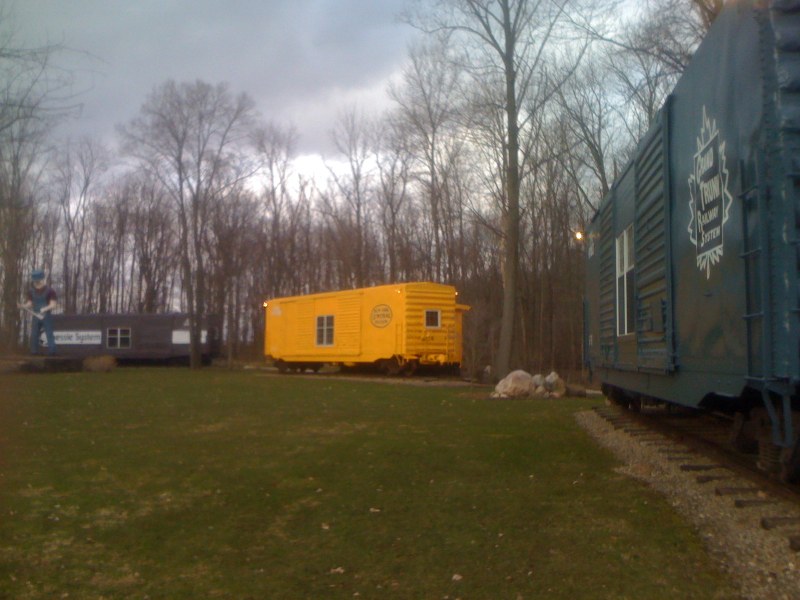One of my kids, I don’t know if it was Kate or Jack, came up with the rather astute observation that it was the normal convention some time ago not to smile when getting your picture taken. So every time we take pictures we have to do a "serious" pose. He is my eight and nine year old Bonnie and Clyde.
Logistic Regression Markov Chain
What is Logistic Regression Markov Chain (LMRC) you may ask? It is a tool that can be used to help with selecting and seeding the NCAA Tournament field. Or if the NCAA does not want to use it for that perhaps you can use it to win your office pool.
According to this article LRMC has predicted 30 of the past 36 Final Four teams correctly. That’s pretty impressive. This year it predicted both the Final Four and Kansas as champion of the tournament.
Something to keep in mind when putting together your brackets next March. And I am looking forward to next year. On a Sportscenter broadcast Dicky V had the Louisville Cardinals coming out of the gate as number three.
Quote of the Week
"We like to consume. I try to consume less. I only have one airplane."
Ted Turner
Hail Entrepreneur!
That is what the tombstone of Edward Lowe reads. Edward Lowe was a very successful entrepreneur in the packaged goods industry. He conceived of kitty litter. Made it into a very successful business. Edward loved cats. He also loved entrepreneurs.
Upon his death the Edward Lowe Foundation was created. The Edward Lowe Foundation has developed expertise in entrepreneurship and peer learning. The foundation does two things.
It hosts leader retreats for founders, owners, and CEOs of what they call second-stage companies. Businesses that have moved beyond the startup phase and are focused on growth issues rather than survival. They define this as more then $1 million in revenue or more then 9 employees.
It also holds retreats for organizations that support entrepreneurship and economic growth. That is why I was in Big Rock Valley. To learn how to be a better facilitator of peer group meetings via their PeerSpectives methodology.
Big Rock Valley is a beautiful place. Twenty six hundred acres of forest, farmland, and ponds make a unique background for learning. Coupled with the boxcars and big men it creates quite the creative environment. I was able to step away from the demands of electronic communication for a day (though the place is all Apple and has Wi-Fi).
During my time there I learned some interesting things. Things that I think that can be put to work to extend the reach of ATDC beyond its traditional model. That is all I will say for now but if you are a second stage entrepreneur ATDC may have a nice program for you in the future.
Boxcars & Big Men
Those that have been following my twitter stream know that I slept in a boxcar the last two nights.
Really. Real boxcars. Here is a picture of the one I slept in.
And the larger box car yard is below. You can see the bag man of Big Rock Valley, Casey Jones, on the left in the distance. There are a total of five cars in the yard. I would need a wide angle lens to capture them all. Should have brought the big camera gear.
Here is a close up of Casey Jones. He stands about 25′. Notice the distinct left hand down right hand up characteristic. It means something. Like he is not a fake. As if someone can fake a 25′ tall steel dude holding an oil can.
The boxcars where not nearly as bad as I made them out to be in on twitter. They were furnished. And heated. I did have to share a bunk room in one.
All in all Big Rock Valley is a bit of a surreal place. But if you make like $600 million selling Tidy Cat to Purina you could build one yourself. It’s a place where you could picture some combo of a scene of Garden State meets Fargo being filmed.
You heard it hear first.
Funding Risk
Back in December I started a brief series on the four categories of new
venture risk. Somehow I got sidetracked after writing about management, market, and technology risk types. So today I thought I would close out the series with a brief discussion of funding or financial risk.
Funding risk is the likelihood that a startup will fail to raise sufficient
capital financing to get the venture to a self-sustaining cash flow
positive state (or to the point where it is acquired). Funding risk
manifests itself in two forms
First, many companies fail because they do not understand the amount of money that it will take to successfully grow their business. Good well thought through business models that contain solid assumptions based on strong research into the business drivers are needed. The operations levers that make a particular business go need to be known and understood. If you don’t know how to make one of these models it is well worth your money to invest in someone to help you. And no matter how well you do this is it going to take a longer period or time and more money than you forecast.
Second, many companies lack a funding strategy. It is quite common that
entrepreneurs do not know what their companies need to look like from
an angel investor or venture capitalist’s perspective in order to
garner investment. They thus set inapropriate milestones and are unable
to secure the next round of funding.
From an early stage investor’s perspective, regardless if they state it or not, all startup milestones should be focused on reducing technology, management, and market risk. You solve for those three, do your homework on business modeling, understand the profile you need to show to investors, and you reduce funding risk.
Quote of the Week
"There’s no such thing as information overload, there is only bad design."
Edward Tufte
Markets Are Conversations
I did not make this up. It is the first thesis of the cluetrain manifesto. Read it. Understand it. Deal with it.
And once you accept that, get on THE HUGHTRAIN.
So what’s the big deal? I mean choo choo already. First, unlike positioning, these are rather new marketing concepts (though cluetrain is now nine years old). Second, like positioning in the second half of the 20th century, these train theories are forming the basis of marketing thought at the beginning of the 21st century.
And a big BTW. The statement that "markets are conversations" is quite different from "marketing is a conversation". What’s the difference? Talking to people at a cocktail party about what kind of car they drive because you need a new only versus reading the BMW 1 ad on the inside cover of WIRED. What matters most to you? I submit the two way with people you know that drive BMWs. It’s the same with your customers and potential customers.
Nobody wants to be sold. So stop selling and start conversing. Remember the two ears one mouth thing? Use that. To converse. In English. Not geek speak.
Conversations are going to happen regardless of if you are working the room with your Grey Goose Red Bull or sitting in the corner nursing your 1964 Bowmore.
You only have one choice. Go with the clear.
P A R T I C I P A T E.
Startup Council Call
Long before I was working at ATDC I was involved in the Startup Council.
The Startup Council was formed several years ago based on the belief that the next generation of emerging entrepreneurs were on the horizon and these folks could use a little free advice. The Startup Council enables companies to gain valuable insights into corporate identity, legal issues, marketing strategy, public relations, raising venture capital, and social engagement without commitment or judgment.
The council meets once a quarter at the offices of Trevelino/Keller. Each company that participates presents for 10 minutes, conducts Q&A for 15 minutes, and is offered feedback and counsel for 20 minutes.
The next council session will take place on May 7 with slots available from 9am to 3pm. If you are interesting in participating in the May event you will find the form to apply below.
You can return it to me or to dtrevelino at trevelinokeller dot com.
Applications are due by April 1st (no joke).
Seduced
I have been. And I gave in.
I bought a MacBook Air. Perhaps not the most rational decision in the world. But Paul Stamatiou (his review) walking into a meeting with one pushed me over the edge. I purchased a gently used 1.6 GHz model on eBay for less than $1,500.
I asked my readers if I should get a MacBook Pro or the Air when it was launched. Surprisingly, most of the hackers who responded suggested getting the Macbook. The plain MacBook sans the Pro. And it is indeed has the best performance/price ratio. That would be the most rational choice for many.
But an equal number of people suggested I go with the Air. My friend Joe Reger opined; "I’ve seen you out and about with a smaller laptop and have to believe
that the portability and form factor is important to you." Joe knows me well. What it came down to is I did not want to increase the weight and footprint of what I carry around all the time. Given that I have a primary machine that I use for the heavy lifting of photo editing and mostly use a laptop for Internet communications, web apps, and Office, the Air has plenty of juice for me.
And on top of that my kids think it’s cool.






